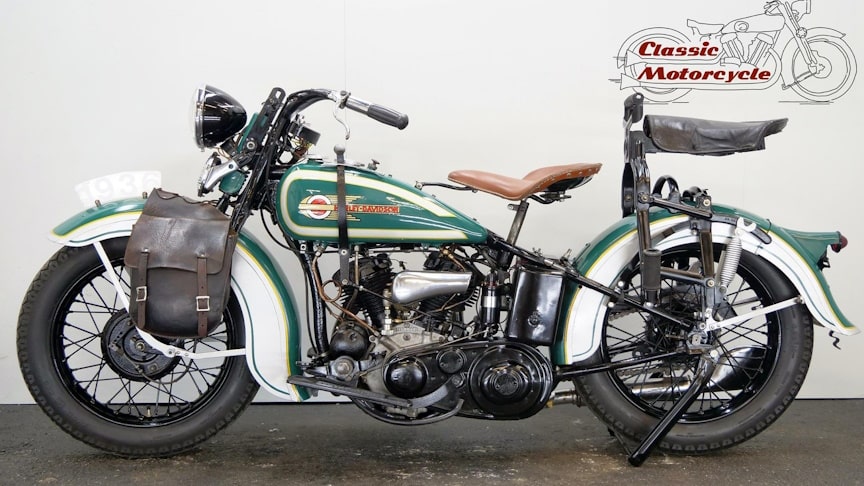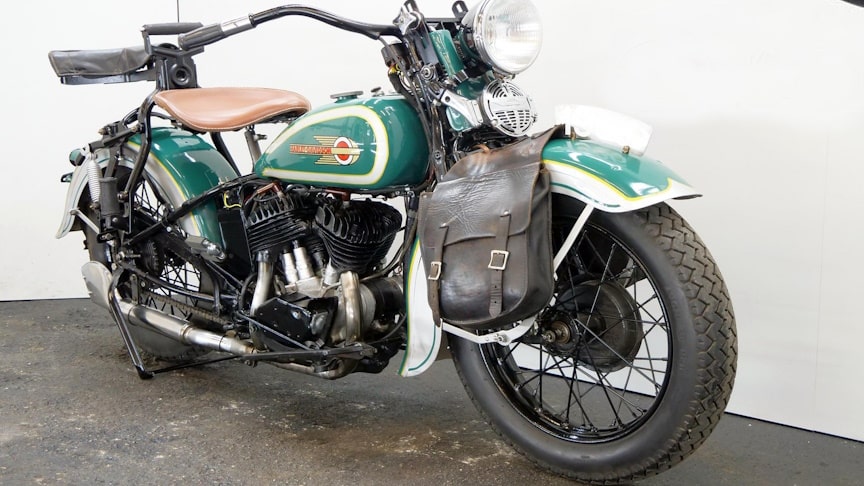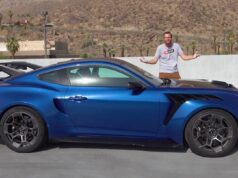Although Harley-Davidson was no stranger to sidevalve (‘flat head’) engines, it did not apply this valve gear arrangement to a v-twin until the arrival of the all-new 750cc ‘D’ (standard) and ‘DL’ (high-compression) models in 1929. With the introduction of the Powerplus model in 1916, rivals Indian had demonstrated that a properly designed ‘flat head’ could produce all the power a road rider required, so it is perhaps surprising that Harley took so long to follow suit.
source.image: classic-motorcycle.com
- Displacement: 742 cc
- Cylinder: 2 / V-twin
- Engine type: 4-stroke / sv
- Bore / Stroke: 70 x 97 mm
- Power: 18.5hp
- Weight: 180 kg
- Top Speed: 110 km/h
One of the other advantages of this new engine was that it was cheaper to produce, enabling Harley to price the new 750cc Model D at $290, and the 45’s relative affordability would prove to be an important factor during the Depression years of the early 1930s.The model designation of the 750cc ‘flat heads’ changed from ‘D’ to ‘R’ for 1932, the change in nomenclature coinciding with the adoption of a new (horizontal) electrical generator and a suitably modified frame.
source.image: classic-motorcycle.com
At the same time, crankcases were changed to accommodate larger flywheels, and the engine also received aluminium pistons. With sales dropping to a mere fraction of what they had been before the October ’29 Wall Street Crash – Harley-Davidson sold fewer than 7,000 motorcycles in 1932 compared to almost 20,000 a few years previously – there was little money available to finance major changes to the 1933 line up.
Advertisement
The company posted a substantial loss for the 1932 financial year and sold only 3,168 machines in 1933. Nevertheless, several improvements were made for 1934, the twins receiving a strengthened frame and forks, a new oil pump, High-Flo upswept exhaust systems, curvaceous new mudguards and a large Airflow tail light. Periodically improved and up-dated thereafter, Harley’s immortal flat head enjoyed an unprecedentedly lengthy production life and was last catalogued, in KH solo form, in 1956, though the three-wheeled Servi-Car version was still on sale in 1973!
This sturdy twin was restored in 2020 since the motorcycle has only run 400km. She comes complete with leather bags in the front and a comfortable military pillion seat. The records of the done work of the engine and gearbox are on a file. This bike was one of the last ever produced in the R-series.












